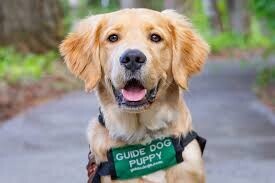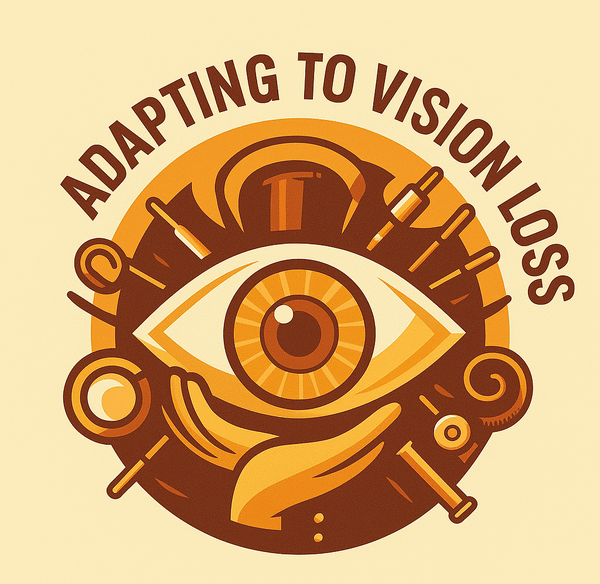 Guide dogs and service animals play a very important role in improving the lives of people with disabilities. I have seen how these animals offer much more than physical help. They provide companionship, independence, and security. In this article, I share detailed insights about the role of guide dogs and service animals, their training, and what communities need to know to work smoothly with these remarkable animals.
Guide dogs and service animals play a very important role in improving the lives of people with disabilities. I have seen how these animals offer much more than physical help. They provide companionship, independence, and security. In this article, I share detailed insights about the role of guide dogs and service animals, their training, and what communities need to know to work smoothly with these remarkable animals.
Understanding the Role of Guide Dogs and Service Animals
Guide dogs and service animals do more than help with navigation and mobility; they also foster social inclusion. I have seen instances where a service animal makes daily tasks smoother and more engaging. These animals are trained to perform tasks tailored to their handler’s specific needs, from guiding someone with visual impairments to providing emotional support.
Legal protections, such as the Americans with Disabilities Act (ADA), ensure that those who rely on these animals have equal access to public spaces. Websites like ADA.gov and Guidedogs of America offer further legal information.
Advantages of Having a Guide Dog or Service Animal
Guide dogs and service animals offer many benefits. They not only improve mobility but also step up the quality of life for their partners by building confidence and fostering independence.
Some key advantages include:
- Better Mobility: These animals help navigate busy streets and public transport safely.
- Increased Safety: They alert handlers to hazards such as uneven pavements or oncoming traffic.
- Emotional Support: They provide comfort in stressful situations, contributing to better mental well‐being.
- Social Interaction: Their presence often bridges social gaps and encourages community engagement.
The bond between a handler and their animal frequently leads to stronger social connections and enhanced participation in community activities.
Training and Certification: The Adventure to Becoming a Service Animal
The training process for these animals is rigorous and thoughtful. My research shows that training is customized to equip them with the skills to perform a variety of tasks reliably.
Typical training programs include these core aspects:
- Socialization: Early exposure enables animals to adapt to different environments and stimuli, preparing them for both busy urban settings and quieter areas.
- Task-Specific Training: Whether guiding someone or alerting to a health emergency, exercises focus on meeting the unique needs of the handler.
- Public Access Training: Animals learn to remain calm and focused in public places, managing distractions like noise and crowds.
- Certification and Evaluation: Following training, many organizations require official certification through evaluations by professionals.
Training is a collaborative adventure where both the animal and handler learn to communicate effectively. Resources from groups like Guide Dogs of International provide additional support during this process.
Collaborating with Guide Dogs and Service Animals
Working with a guide dog or service animal demands understanding and respect. I have learned that even small, mindful actions can greatly impact the animal’s effectiveness and the handler’s comfort.
Here are a few tips to promote positive interactions:
- Keep a Respectful Distance: When you see these animals at work, avoid petting or distracting them, as their focus is vital.
- Avoid Unintentional Contact: Do not assume every friendly animal is open to touch; always ask the handler first.
- Follow Public Guidelines: Many places offer clear instructions for interacting with service animals. A simple question to the handler can help maintain courtesy.
- Educate Others: Sharing accurate information about the rights and needs of service animal users increases public understanding and creates a safer environment.
These tips help ensure that the important work of guide dogs and service animals is not disrupted by unintended actions.
Considerations When Choosing a Guide Dog or Service Animal
Selecting a guide dog or service animal is an important decision that depends on personal needs, lifestyle, and the kind of support required. The choice involves careful planning and consultation with experts.
Key factors to consider are:
- Specific Needs: Consider which tasks are most essential for daily independence. For instance, a guide dog benefits someone with visual impairments, while others may need combined physical and emotional support.
- Matching Temperament: The animal’s temperament should align with the handler’s personality and lifestyle. A calm demeanor is crucial in busy areas, whereas a more energetic animal might suit an active lifestyle.
- Training Background: Investigate how the animal was trained and what certifications it holds. Solid training forms the foundation for effective service.
- Long-Term Care: Ongoing responsibilities include regular veterinary visits, exercise, and mental stimulation to keep the animal healthy and efficient.
Conversations with service animal training organizations can offer clarity and help match individuals with the right animal partner. Resources like Working Dog Alliance provide valuable guidance.
Frequently Asked Questions
Question: What is the difference between a guide dog and a service animal?
Answer: A guide dog is specifically trained to aid individuals with visual impairments, while a service animal can serve multiple roles, from alerting to health issues to providing both mobility and emotional support.
Question: How are these animals trained?
Answer: Their training is extensive and includes socialization, task-specific exercises, public access training, and certification—all conducted by professionals with ongoing reinforcement.
Question: What legal rights do service animal users have?
Answer: Laws such as the ADA guarantee service animal users access to public spaces and transportation. It is wise to consult current legal guidelines on sites like ADA.gov.
Question: Can anyone have a service animal?
Answer: Service animals are trained for specific tasks related to a disability. While emotional support animals are helpful, they generally do not have the same legal privileges. Certification is essential for public access rights.
Advancing the Partnership: Ongoing Support and Education
Even after choosing a guide dog or service animal, the adventure continues with ongoing support and education. Handlers need to keep learning new training techniques, stay updated on legal changes, and remain proactive about their animal’s care.
Many organizations offer refresher courses and specialized sessions to help both partners adapt to evolving needs, ensuring high standards of service and mutual comfort.
Support groups and community programs also provide advice and peer connections, further empowering users to live more independently.
Building Awareness and Supporting Community Initiatives
Raising awareness about guide dogs and service animals is a collective effort. Education can shift perceptions and lead to more inclusive public spaces. Various initiatives focus on teaching the public how to interact appropriately with these animals.
As awareness grows, support for improved legislation and services follows. Workshops, seminars, and awareness campaigns help foster a culture of respect and understanding, benefiting everyone in the community.
This approach builds an inclusive social environment where diversity is recognized and valued, supported by nonprofit organizations such as Guide Dogs for the Blind.
Conclusion
The impact of guide dogs and service animals is truly significant. These animals provide both practical assistance and emotional support, playing a key role in fostering independence and enriching lives.
With proper training, ongoing care, and legal protection, they open up new possibilities for those in need. I hope this article offers valuable insights into how these animal partners help create a more inclusive society.
The information provided here is intended to guide those directly involved with service animal programs as well as anyone interested in learning more about these next-level cool partnerships.
